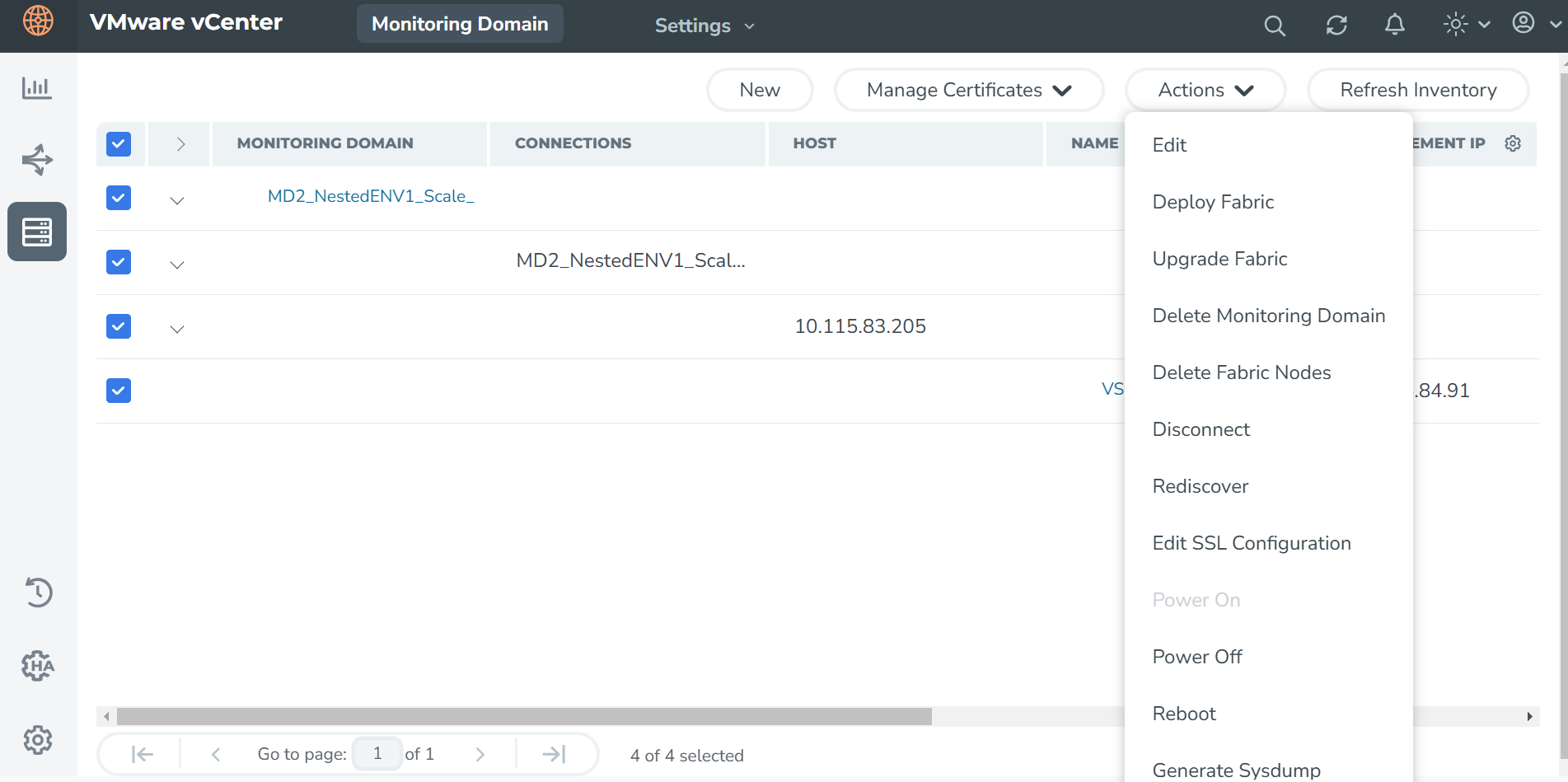Debuggability and Troubleshooting
Refer to the following topics for details:
Sysdumps
A sysdump is a collection of logs and system data that are used for debugging purposes. A sysdump is generated when a GigaVUE V Series Node crashes (e.g., kernel, application, or hardware crash).
Note: If the fabric component is deleted or unreachable, the sysdump files cannot be downloaded.
Sysdumps—Rules and Notes
Keep in mind the following points before you generate sysdumps:
| You can generate only one sysdump file at a time for a GigaVUE V Series Node. |
| You cannot generate a sysdump file when another sysdump file generation is in progress. |
| The limit of sysdump files available per GigaVUE V Series Node is six. When you generate a seventh sysdump file, the file overwrites the first sysdump file. |
| You can download only one sysdump file per GigaVUE V Series Node at a time. |
| You can delete sysdump files in bulk for a GigaVUE V Series Node. |
| To ensure efficient usage, the system will limits the number of simultaneous sysdump generation requests to 10 GigaVUE V Series Nodes. |
| GigaVUE V Series Node sysdumps are not stored in Fabric Manager but generated and stored on the GigaVUE V Series Node itself. |
Generate a Sysdump File
To generate a sysdumps file:
- Go to Inventory > VIRTUAL > VMware ESXi > Monitoring Domain. The Monitoring Domain page appears.
- Select the required node, and use one of the following options to generate a sysdump file:
| Click Actions > Generate Sysdump. |
| In the lower pane, go to Sysdump, and click Actions > Generate Sysdump. |
To view the latest status, click Refresh.

To download a sysdump file, select the file in the lower pane, and then click Actions > Download.
To delete a sysdump file, select the file in the lower pane, and then select a sysdump file to delete. Click Actions > Delete. To bulk delete, select all the sysdump files, and then click Actions > Delete All.



